Founded this year, AVS Futebol SAD, commanded by the former UEFA Champions League winner Jorge Costa, are doing quite well in the second tier of the Liga SABSEG. At the moment, they are an unbeaten first-placed team, with six wins and one draw, giving a total of 19 points. Moreover, they are also in the group stage of the Allianz Cup after they eliminated two sides from the first tier, which is a remarkable achievement from this side.
Focusing again on the league, most of their success is due to their efficiency and solidity while defending, where they have only conceded two goals in seven games. Jorge Costa has a crucial role in it not only due to his intense and passionate personality but primarily due to his knowledge and experience gained while playing as a centre-back alongside top players and under José Mourinho.
They are a very organised team that does not neglect the offensive process (nine goals in seven league games); on the contrary, they have an identity which consists of hurting the opposition by having the ball, taking advantage of their excellent interior game and fast wingers. It’s also important to note that almost 50% of the goals were scored by the Brazilian veteran Nenê, who, at 40 years old, seems to be ageing like a fine wine.
In this tactical analysis, we’ll focus on the AVS defensive phase and understand the main reasons behind their off-possession success as we try to understand where they can improve.
High-block pressing and aggressiveness

AVS use the classical 4-3-3 as their general game model, yet as usual, there are several changes in the course of the game. With the ball, they play with the full-backs backtracked and with one single pivot while the other centre midfielders are exploring the space between the lines, forming a 4-1-4-1. Both midfielders, Benny and Luís Silva, are deep in possession. However, the second acts more as a box-to-box while the other takes his creativity role more seriously. As the play evolves, the full-backs can rise on the field, always ensuring their team’s defensive cohesion.
Several examples of teams that play with their full-backs deep and wide expose their side to eventual counterattacks. Yet, Jorge Costa ensures his team defensively while attacking by having his players well positioned and prepared in case they end up losing possession.
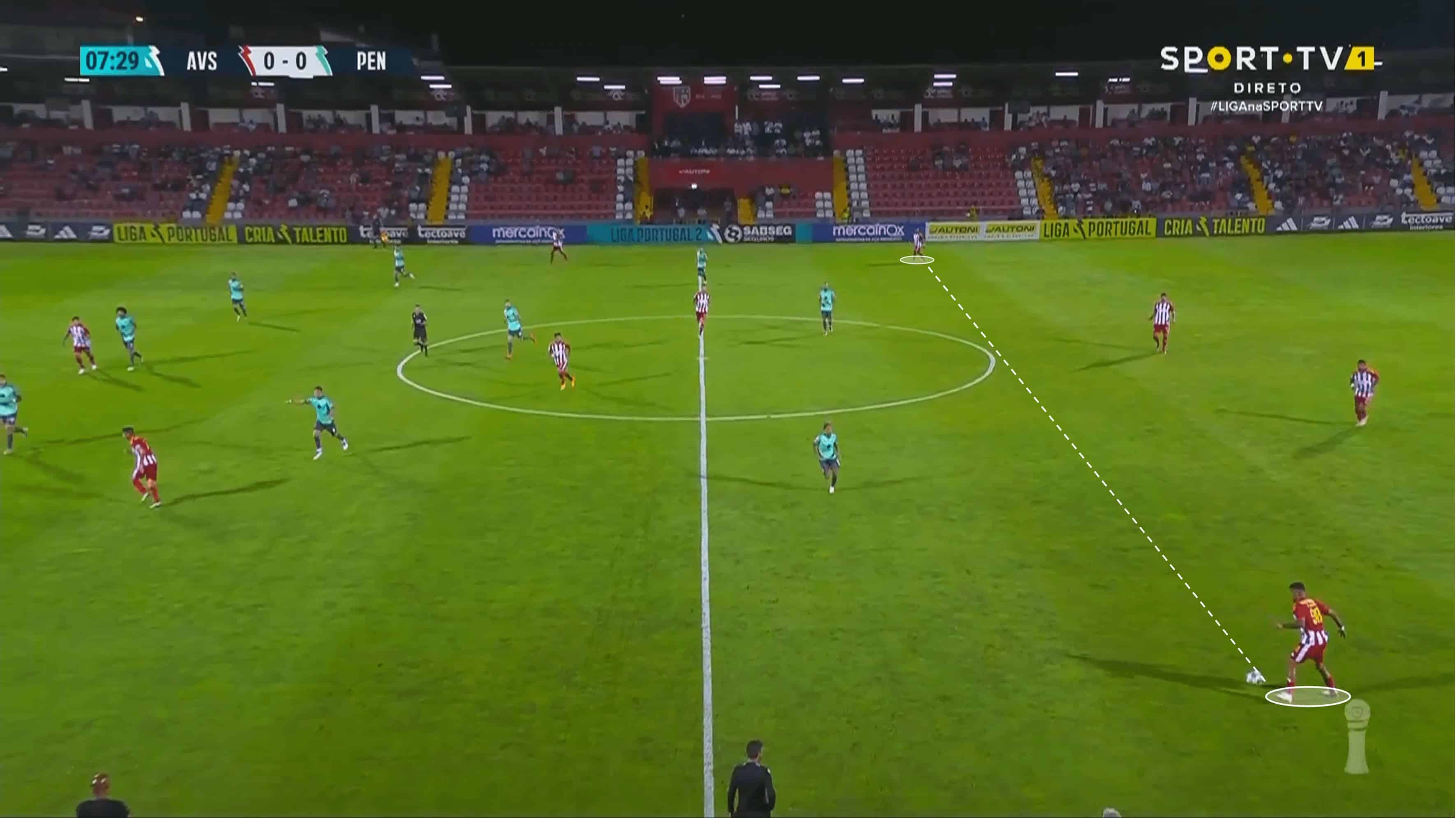
Coaches from all over the world are using their full-backs with this dual function; whereas some of them like to play with them inside, privileging the interior game and the defensive transition, others like Jorge like to play with them backtracked on the pitch.
Moreover, the head coach seems to have printed his passion and frequency into his squad, especially when talking about pressing, reaction after the ball is lost and defensive duels.
Let’s start with their pressing tactics. One of the indicators of a team that likes to hurt the opposition by having the ball is related to a high, intense and effective pressing plan, like, for example, Pep Guardiola‘s Manchester City or even Arsenal. Even though AVS is clearly not at these giants’ level, they feel comfortable forcing the opposition to play a more direct game and win the second ball.
In fact, according to Wyscout, Jorge Costa’s side has a 7.27 PPDA (Passes Per Defensive Action), which is entirely below the average in their league, verifying AVS’s effective pressing. This moment is also assisted by some coordinated pressing indicators, such as a back-aerial pass, which immediately inducts the backline to go up on the pitch. These types of stimulus take place due to the players’ understanding of covered and uncovered ball situations, allowing them both to succeed while controlling the depth and pressing.
Furthermore, as we stated, they are also aggressive and strong when they lose the ball, which is excellent not only to re-establish their possession but also to devitalise the opposition’s counterattack.
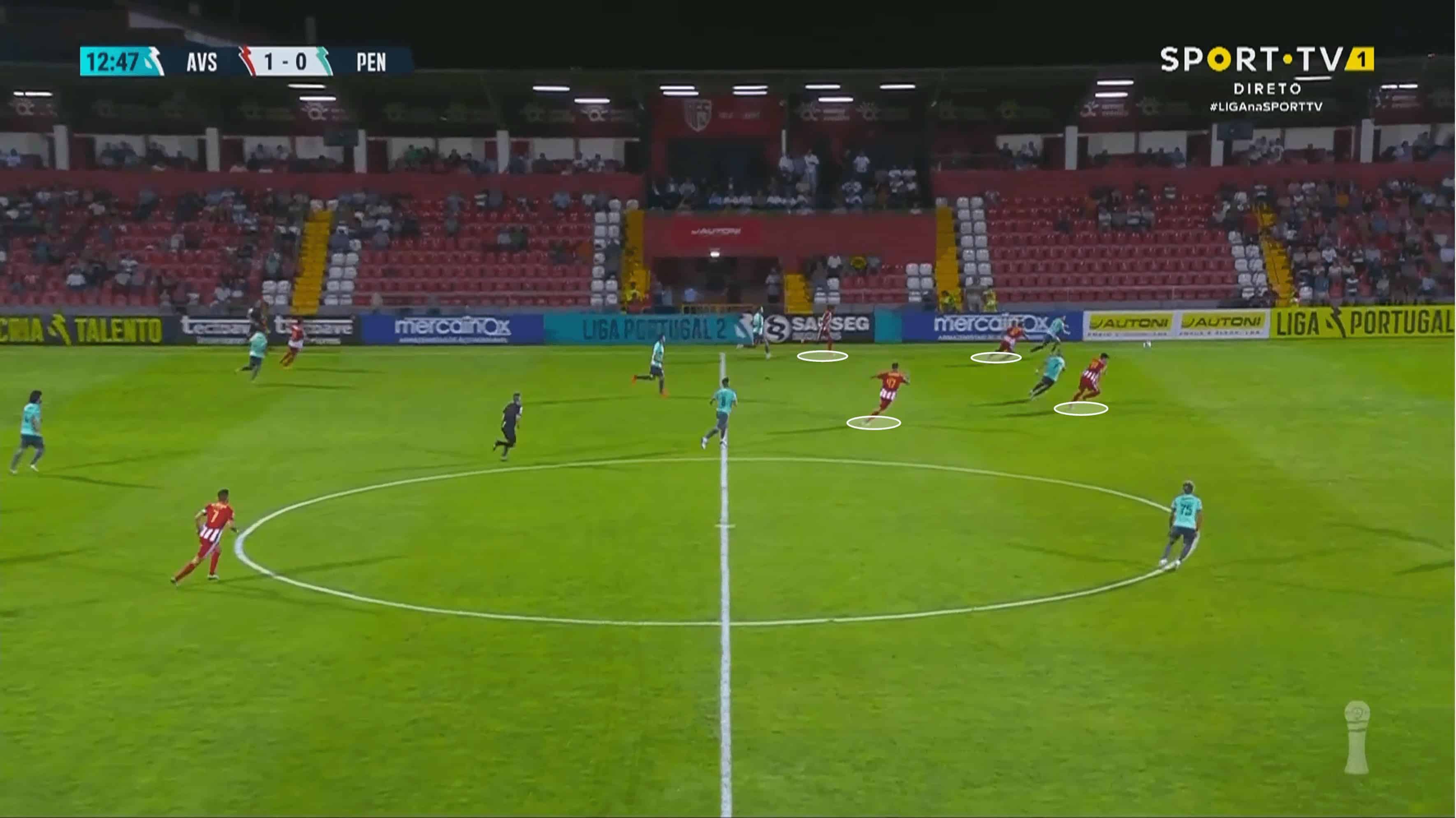
For example, in this sequence, we see that AVS could reorganise and disarm the opposition’s perilous counterattack after a dangerous turnover within six seconds.
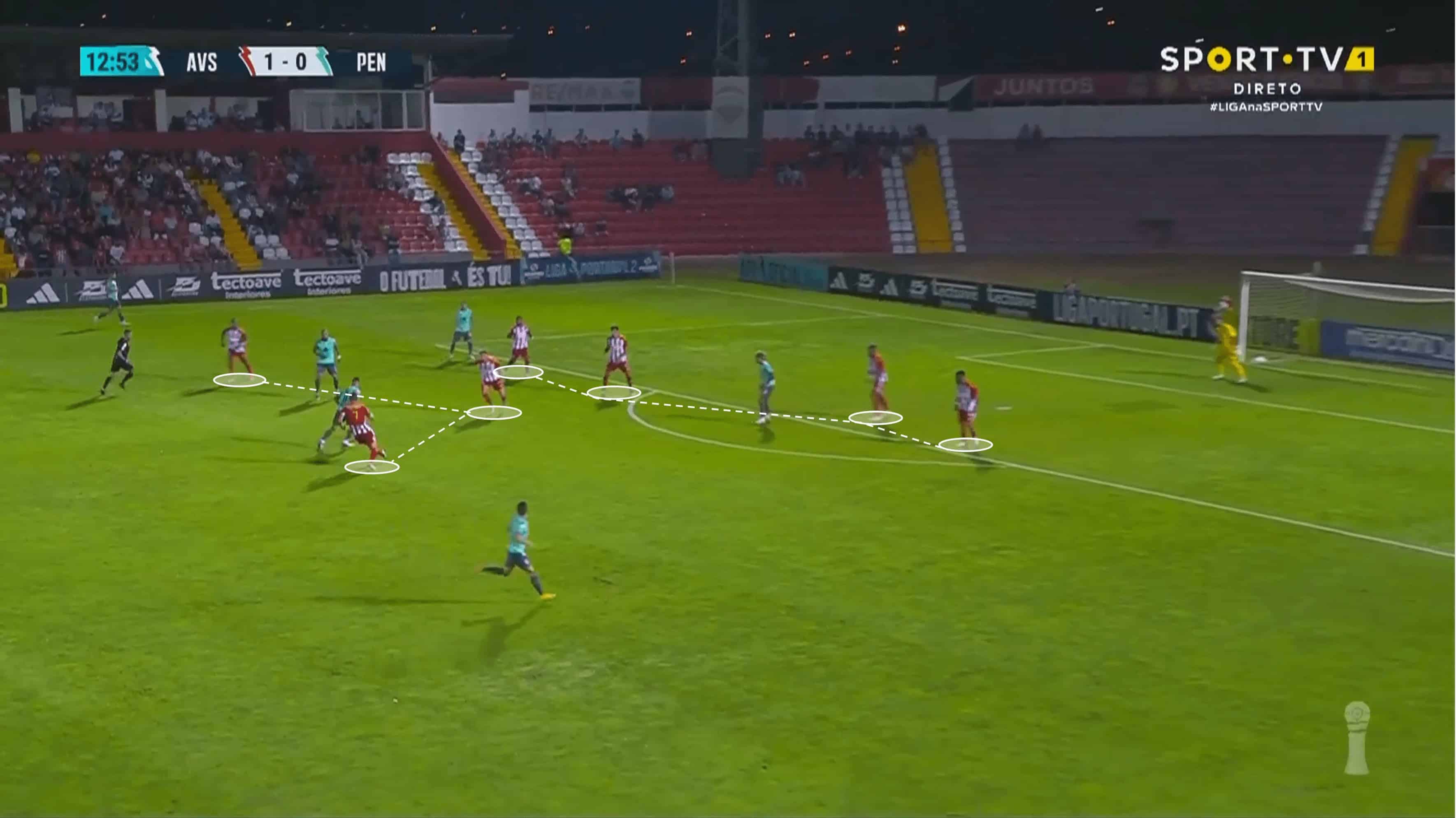
The idea that the team works as a solid block is visible at AVS, and the defensive transition is equally intense by the three different sectors (attack, midfield and defence). For example, it is expected to see the wingers descending right into the backline in case the opposition is projecting their full-back, as shown below.
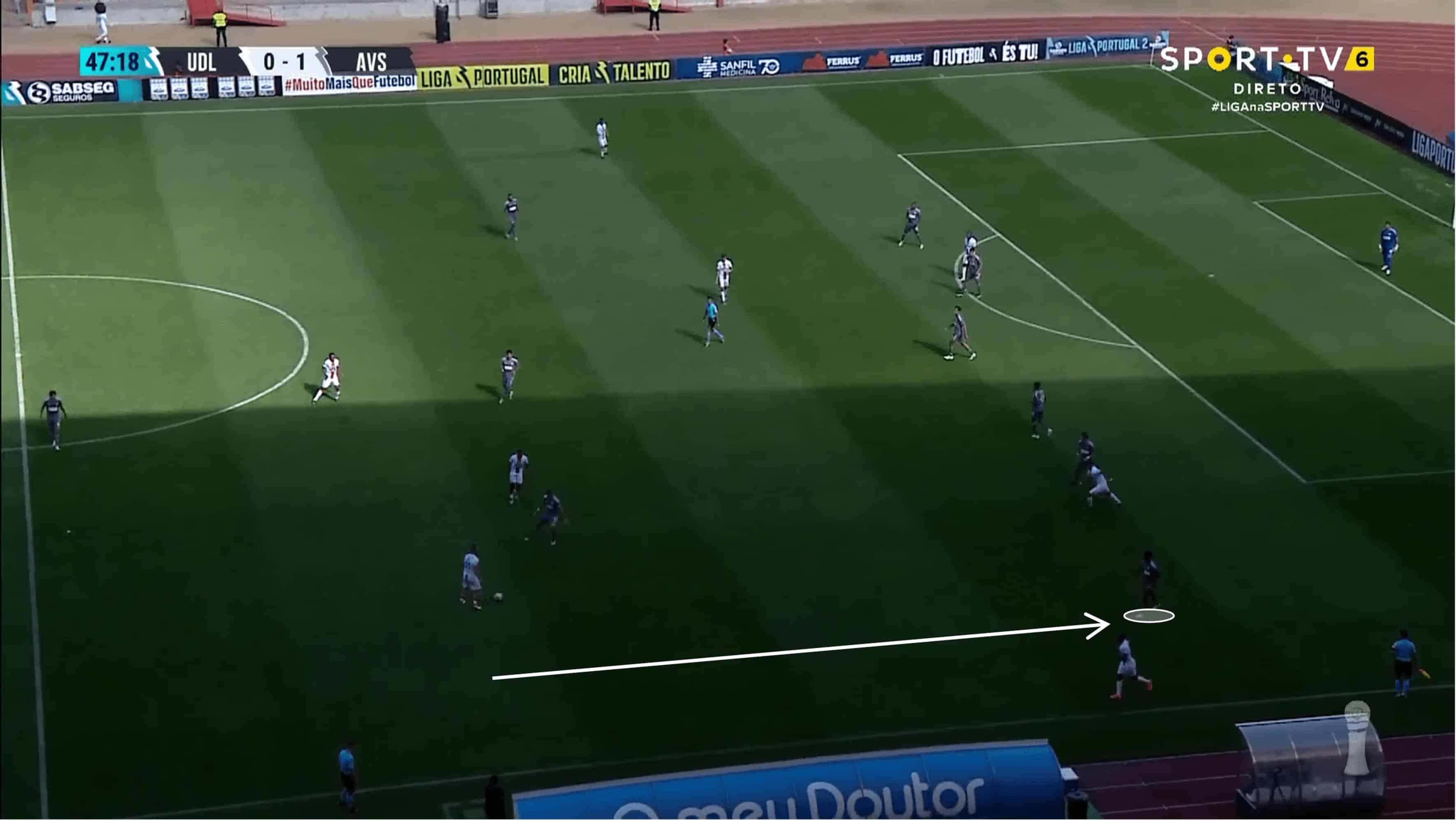
Other evidence of their eagerness to reconquer possession is the number of faults committed by their disciplinary board. Resorting to Transfermarkt, we verified that during this Liga SABSEG edition, AVS accumulated 21 yellow cards and one red card.
Some interesting defensive details
During our analysis, we also found it interesting that this side is fully committed to shortening the space between the defensive and medium lines in order to block the opposition’s interior game. This can be done through the centre-back’s behaviour or with the influence of the left-central midfielder, Luís Silva.
On the one hand, the two centre-backs consistently are instructed to mark the player looking for that particular space to play to reduce the odds of the other team succeeding while playing inside.
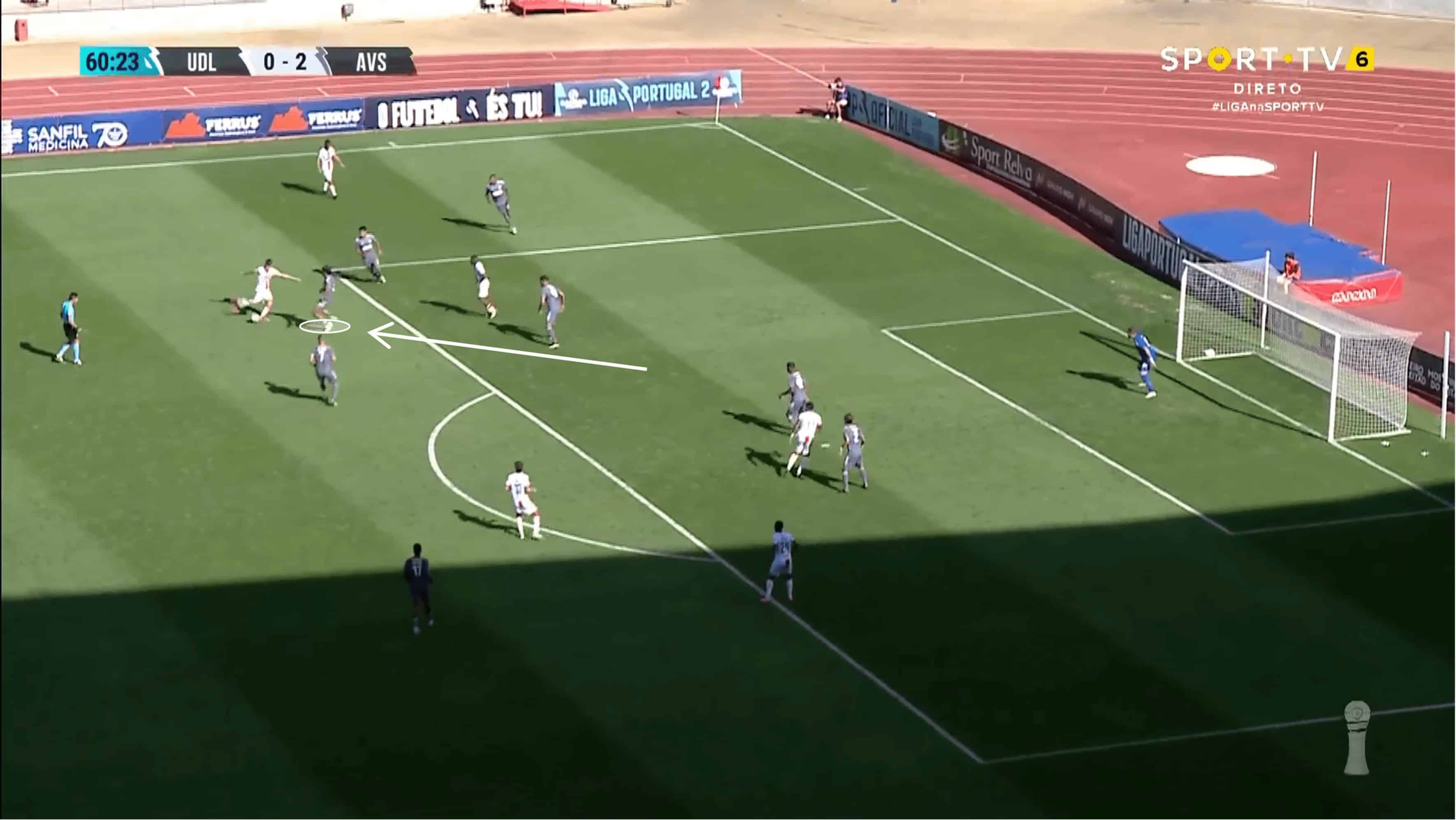
Although it is positive for the situation we describe, it can have its downsides, especially when discussing the gap created on the defender’s back. Yet, Jorge instructed the two centre-backs to coordinate during such situations; for example, if one leaves his normal positioning, the other immediately covers him.
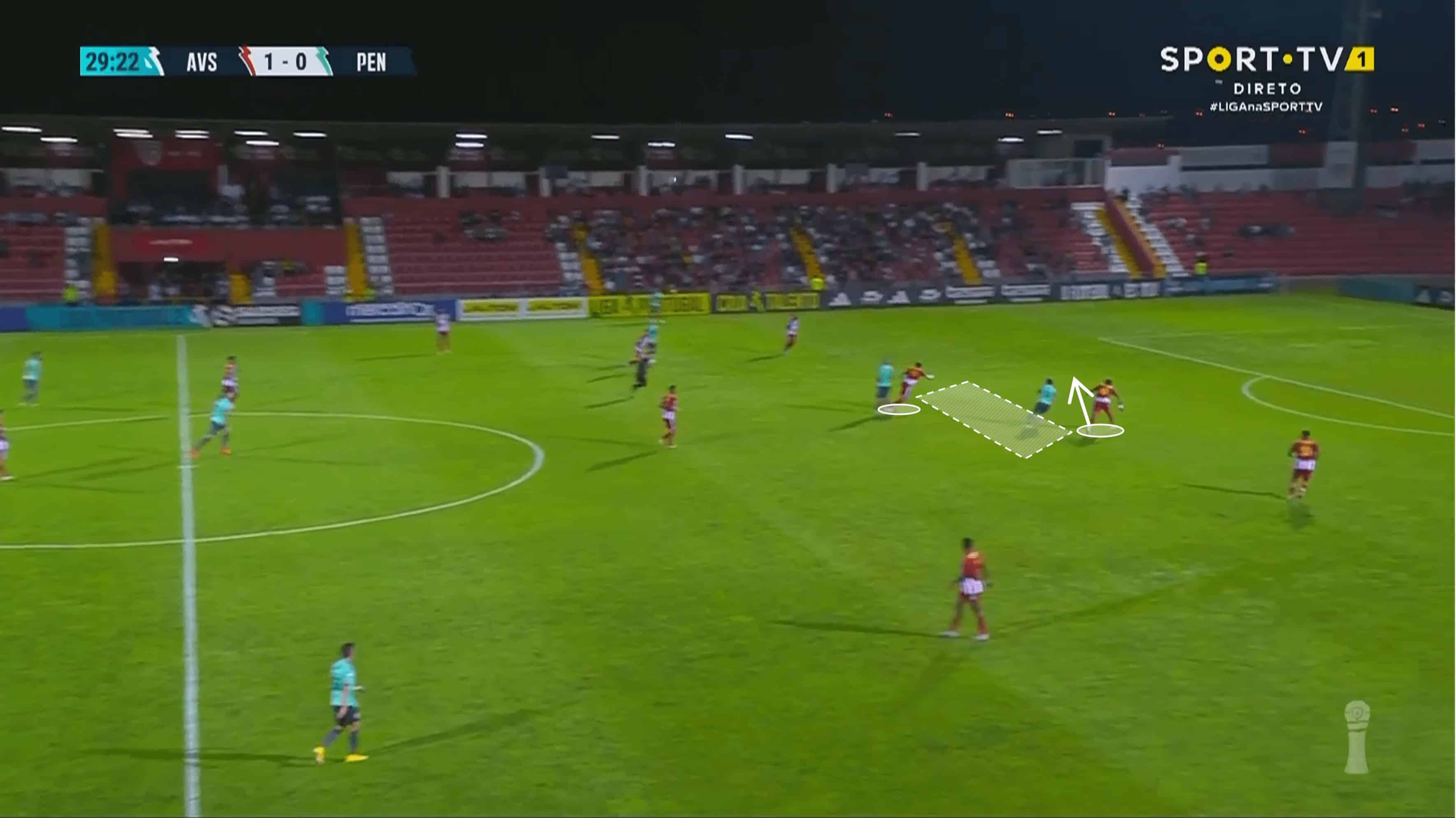
Conversely, we referred to the fact that AVS plays preferentially with one single pivot. However, this can change during the game. In Costa’s model, his primary defensive function is to monitor and assist the backline by being positioned near them.
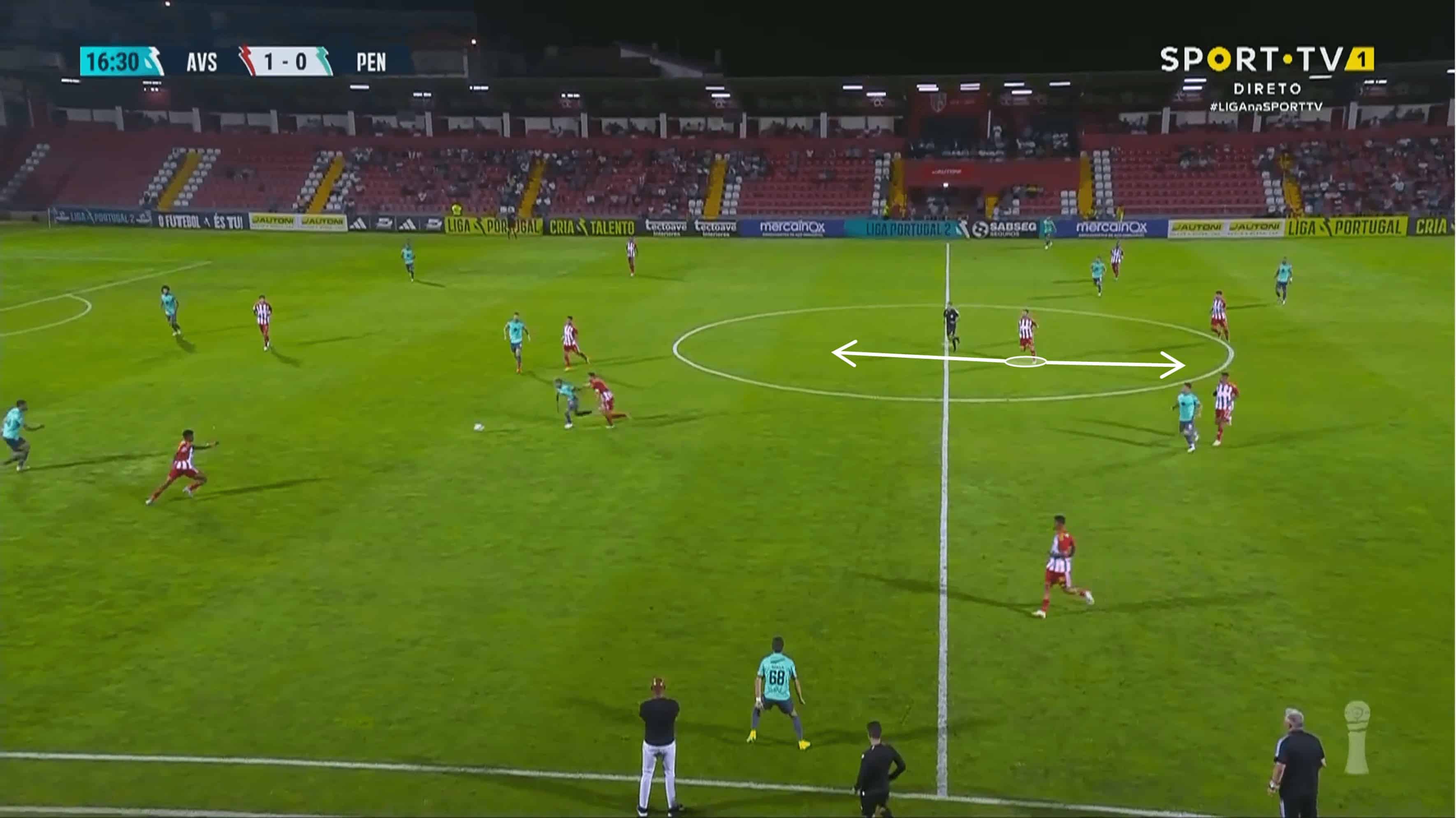
This strategy takes place so that he can easily cover one of the centre-backs whenever needed; that’s when Silva enters the scene. When the pivot enters the backline, this midfielder descends and acts as a pivot, increasing AVS’s defensive solidity.
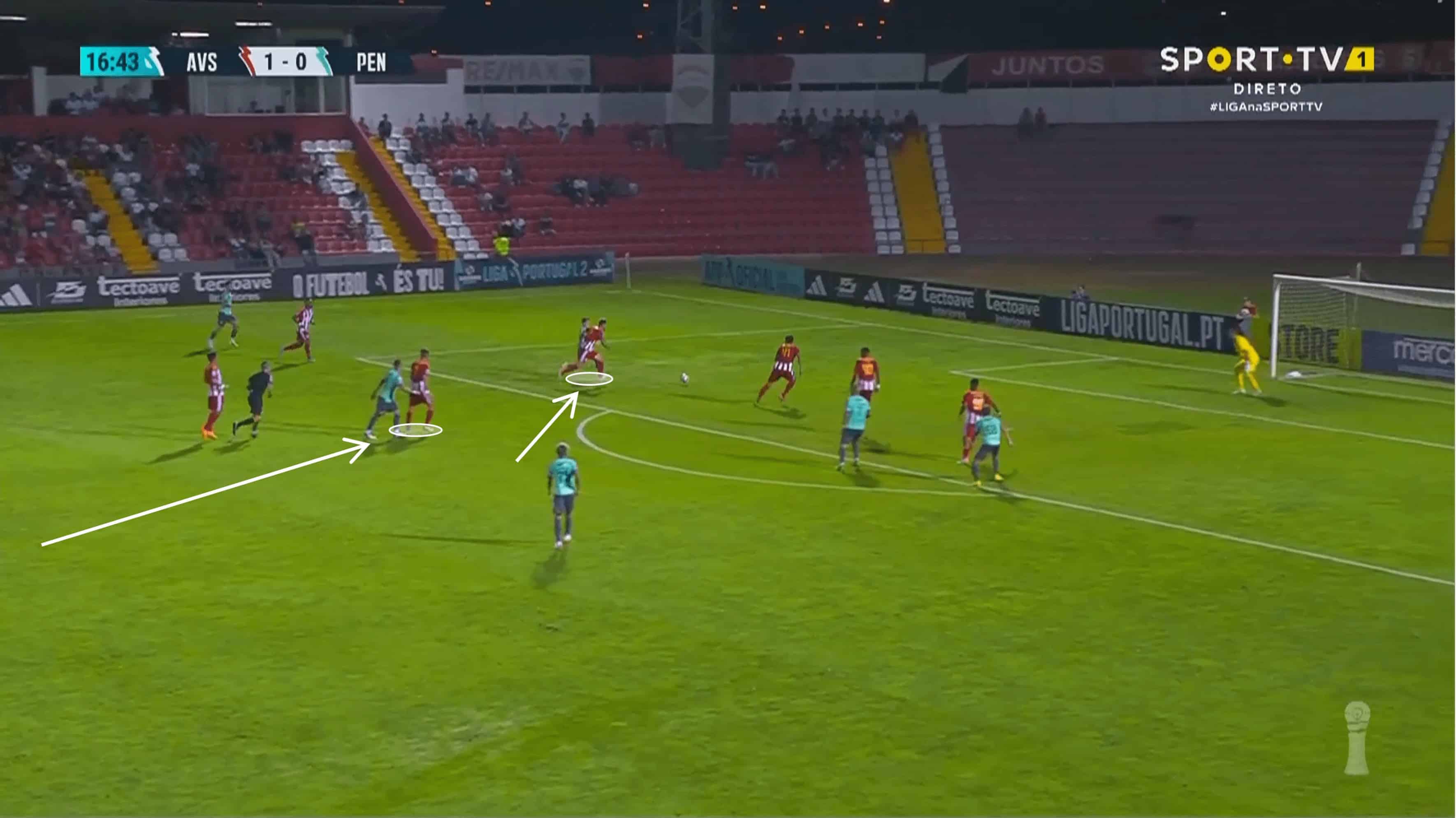
If the other team increases the number of players playing inside, Luís is also more conservative and acts alongside the other pivot, forming the 4-2-3-1 presented above. As we see it, it’s essential, and in some cases, we would say decisive, to have different types of midfielders playing together because they can complement themselves.
For instance, look at the 2020/2021 Sporting CP. They played with Palhinha as a defensive midfielder, and his prime function was to destroy and win balls in their own half. Conversely, Matheus Nunes had a critical role similar to Luis Silva’s: help Palhinha ensure Sporting’s defensive balance and simultaneously be a linking element while attacking.
We also found it interesting that the opposite-flank winger makes an effort not to be attracted by the ball while the other team is in possession. Similar to when the ball-side winger enters the backline, with this positioning, AVS decrease the odds of being in a numeric inferiority situation (1v2) by the flank.
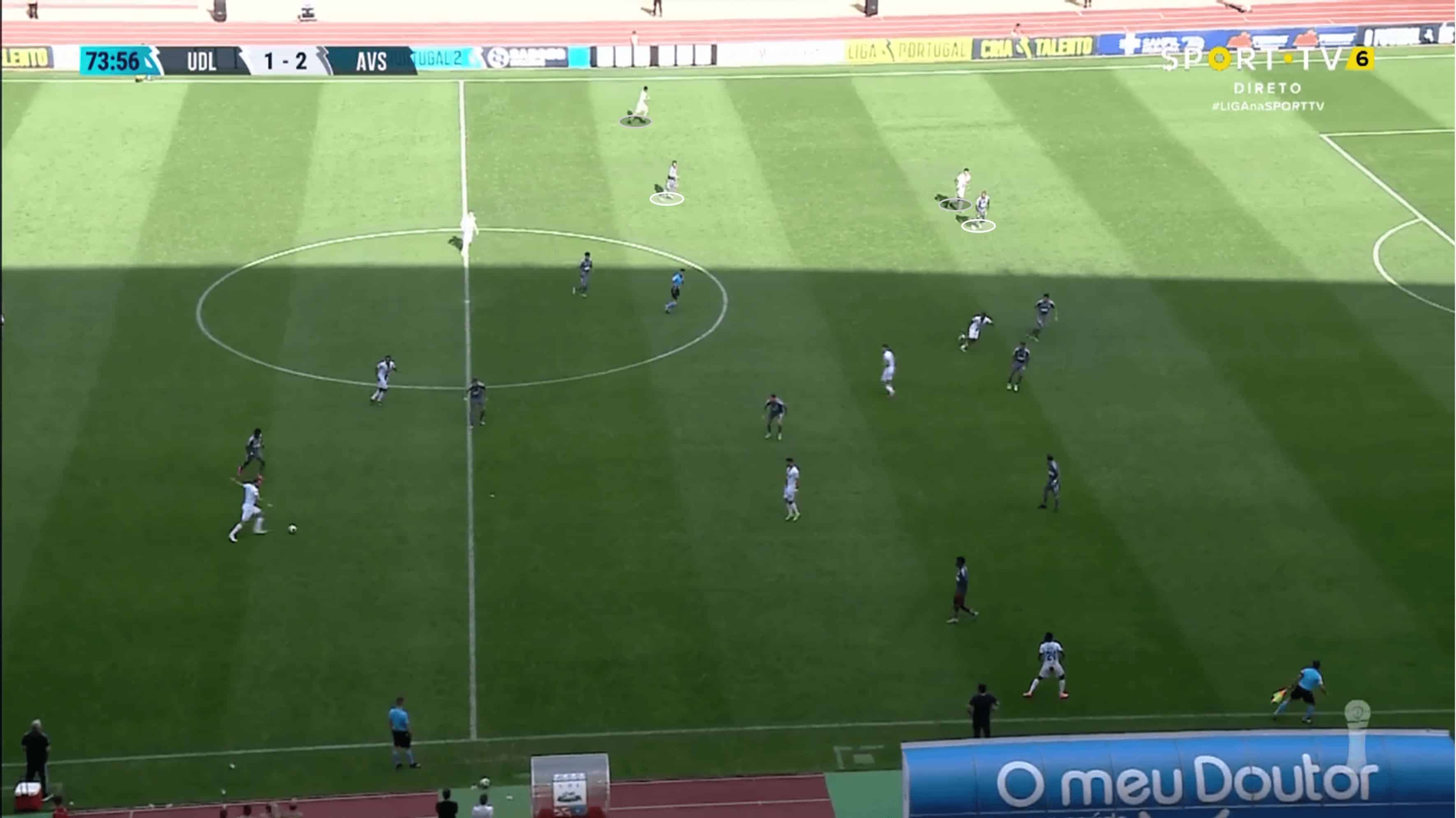
Let’s not forget about the set pieces, where they are particularly strong and organised. On corners, they leave five elements doing men-to-men marking, leaving two on a zonal approach inside the box (one in the near post, the other protecting the middle of the goal). Jorge leaves two other elements near the takers to block an eventual short-corner try. Finally, one man is left projected in case they want to hurt the opposition through a quick counterattack.
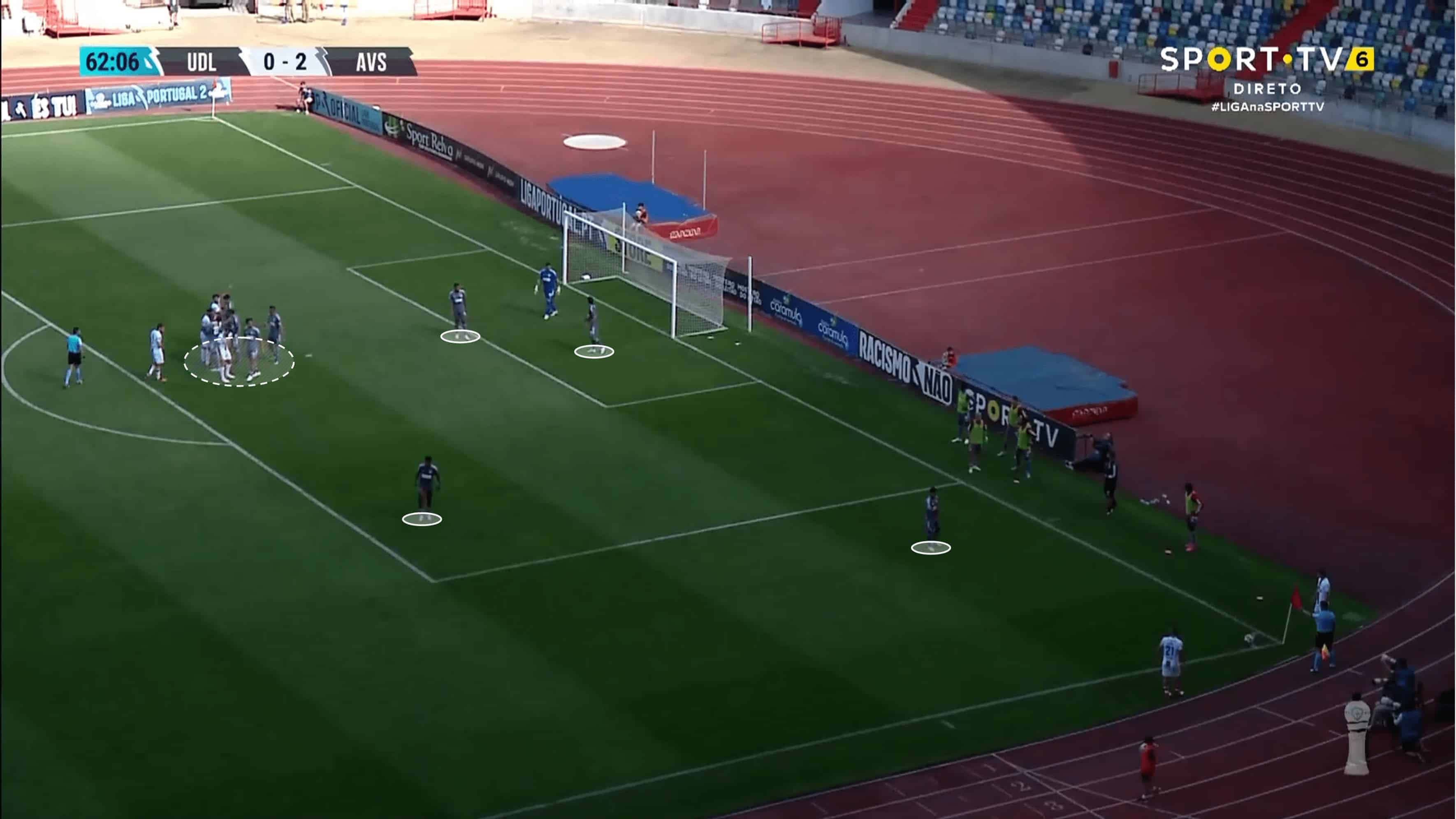
The two most used centre-backs are also strong physically with a decent height, especially the Brazilian Clayton, which allows them to be strong in this type of duels.
Conclusion
AVS is having an outstanding start under Jorge Costa in the second tier of the Portuguese League, where they’re still unbeaten with the second-best defence. Their defensive strength lies in their trademark high-block pressing, which effectively disrupts the opposition’s build-up play and helps maintain their possession.
In this scout report, we also covered the critical role of Luís Silva in assuring defensive cohesion by descending on the pitch whenever necessary but also in being directly associated with AVS’s offensive process.
In our view, during the defensive process, the coordination and compactness of the backline are crucial, especially when it’s necessary to rise or descend the block. That said, we consider AVS an entirely developed team in this feature where they understand the correct timing to go up and down.
“The best defence is the best attack”, and in fact, this side has some interesting details in their game plan which privilege their defence while attacking, like, for example, using the full-backs low in the first instance. Moreover, their willingness to have possession also verifies such a statement, which suggests that a team that attacks the most time will consequently suffer fewer attacks from the opposition.
In summary, it is too early to think about promotion or the title with only seven out of 34 games played. However, Jorge has set high standards for this AVS season.

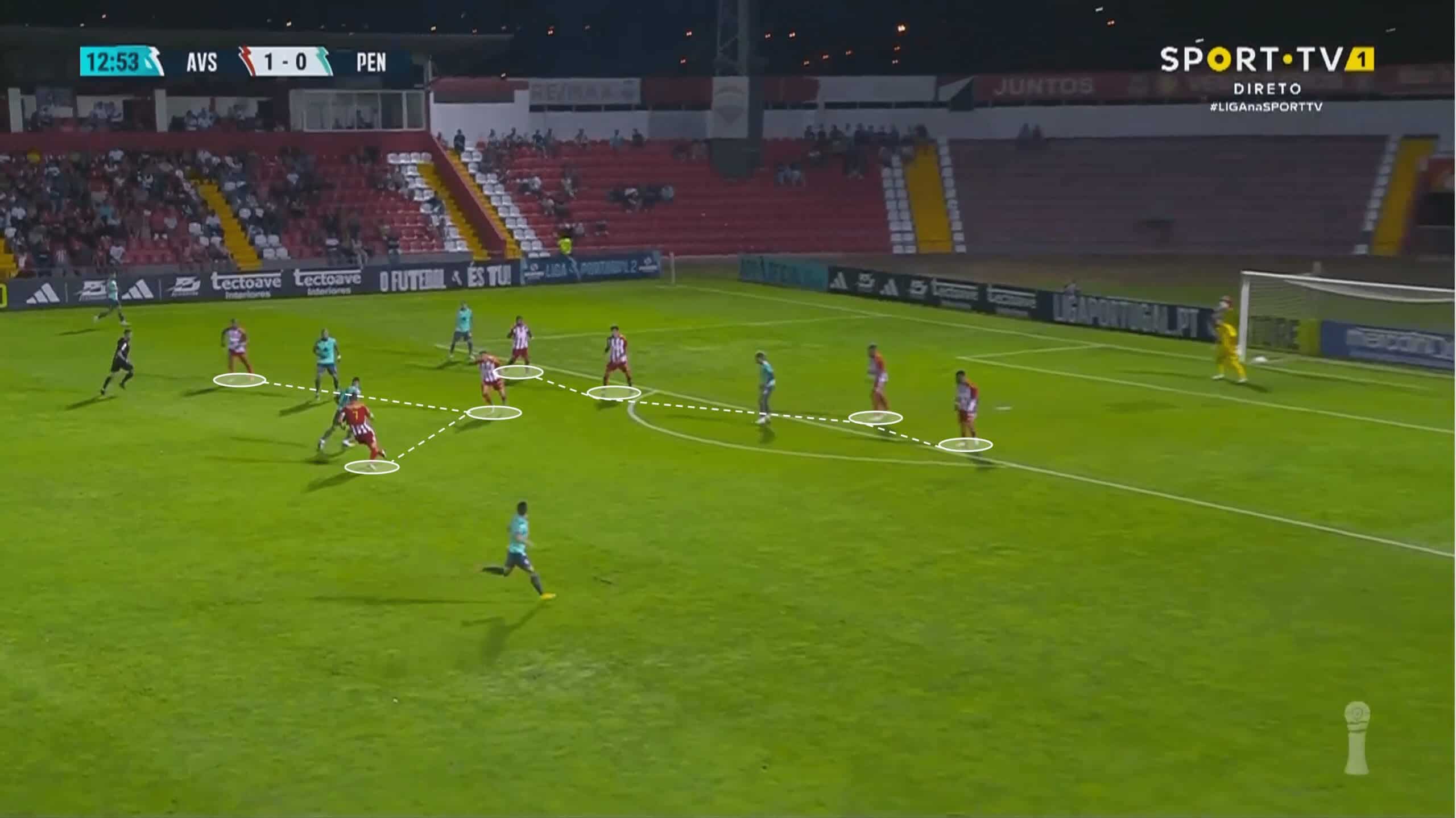




Comments